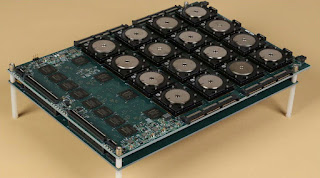Healthcare IT outsourcing deals with the outsourcing of several IT functions to a third party in order to maintain and manage technology-related operations. The healthcare sector generates vast amounts of data, due to which it needs assistance for tracking the data electronically for billing codes, patient care, and maintaining medical records. As a result, a strong IT infrastructure, solutions, and devices are required to manage the valuable data. However, in the absence of necessary skills and IT-domain expertise, the maintenance of data becomes a crucial task for the healthcare sector. The outsourcing of several IT services helps in allowing healthcare providers to improve their service quality.
Get a Free Sample Report:
As per a research study by Transparency Market Research (TMR), the global market for healthcare IT outsourcing is projected to reach US$61.28 bn by the end of 2023. This market is expected to exhibit a 6.70% CAGR between 2015 and 2023.
In this blog, TMR provides answers to several queries concerning the major opportunities and growth prospects in the global healthcare IT outsourcing market.
What are the primary reasons for IT outsourcing in the healthcare sector?
Nowadays, several healthcare organizations are investing enormously in IT outsourcing in order to enhance their focus on their core services and reduce management costs. Outsourcing also helps in gaining access to world-class products and services, which reduces operational costs. It takes care of several components such as financial data management, patient data management, healthcare data analytics, asset management, and several other administrative services. Moreover, the adoption of IT outsourcing helps in dealing with rising concerns related to data security and consolidates the overall healthcare system.
What are the major developments in the global healthcare IT outsourcing market?
Governments are encouraging healthcare reforms such as International Statistical Classification of Diseases and Related Health Problems (ICD-10) norms, Affordable Care Act (ACA), Health Insurance Exchange (HIX), and Medicare, which have led to increased adoption of IT outsourcing services in the healthcare sector. In addition, the leading players including Accenture Plc., Infosys Limited, McKesson Corporation, IBM Corporation, Allscripts Healthcare Solutions, Inc., and Cognizant Technology Solutions are making continuous efforts to offer advanced IT services to the healthcare sector. For instance, Cognizant has come together with Orion health to develop a cloud platform to allow new levels of payer, provider, and consumer collaboration.
Browse Press Release:
What are the potential growth opportunities for the major players in global healthcare IT outsourcing market?
Healthcare infrastructure has been developing across the globe resulting in high demand for cost-effective IT services. In addition, the booming medical tourism in developing economies has created several opportunities for the major players operating in the global healthcare IT outsourcing market. The growing government interventions to provide the consumers with technology-driven and cost-efficient healthcare services are further expected to boost the demand for healthcare IT outsourcing services in the next few years. Furthermore, the increasing healthcare expenditure and growing patient population worldwide pushes the requirement to outsource IT solutions for enhanced healthcare management.




















